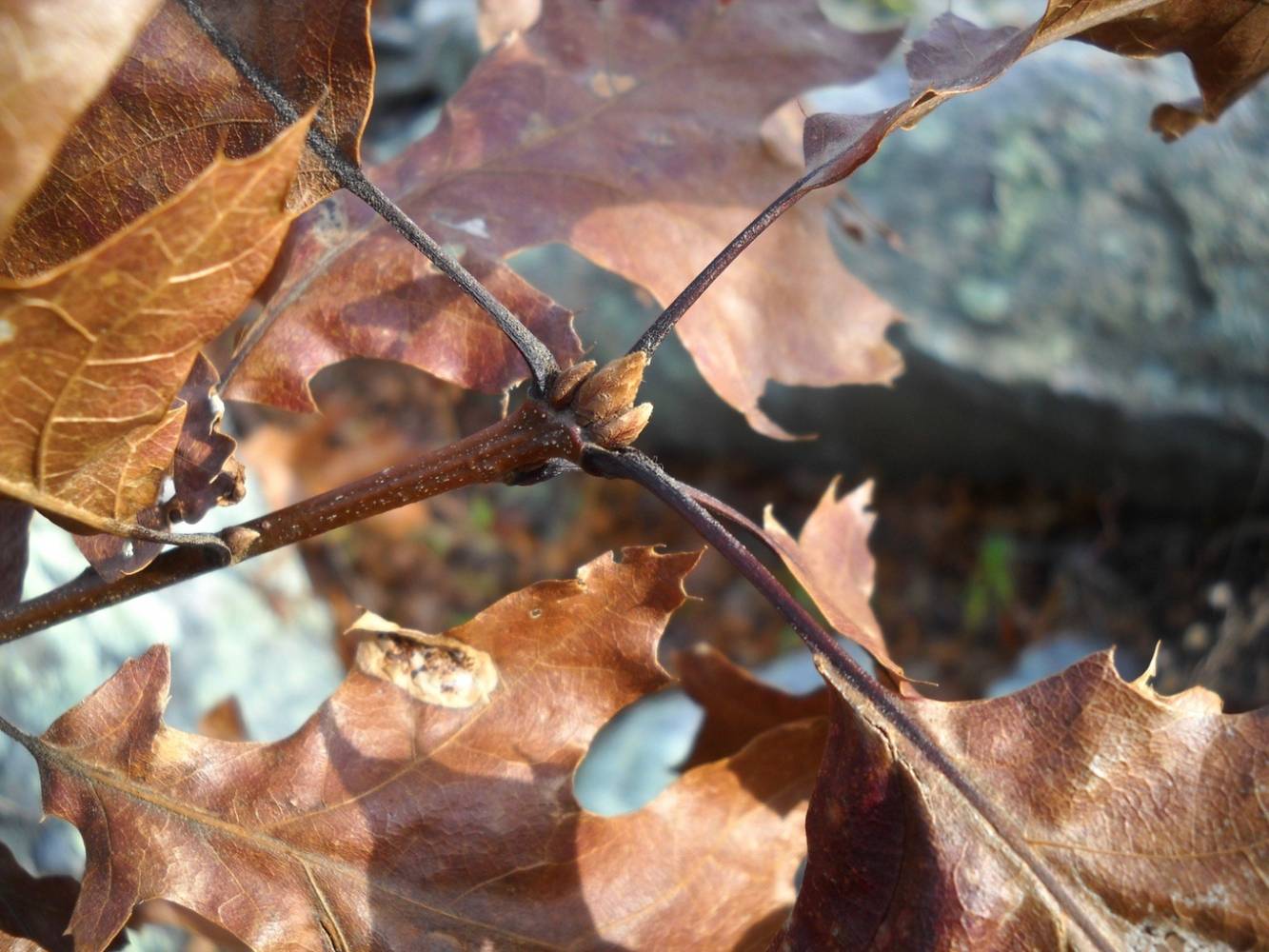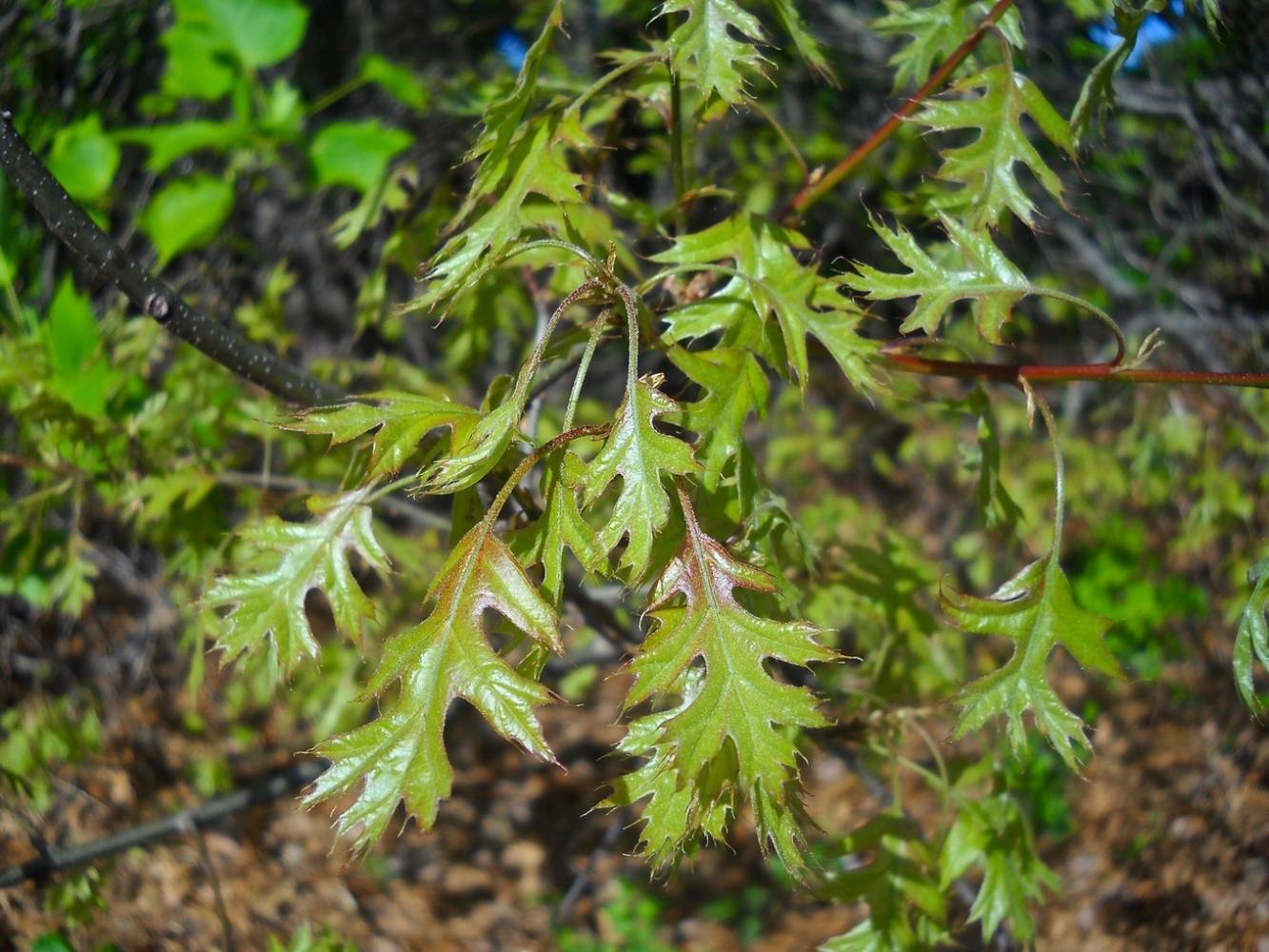scarlet oak
Scarlet oak is native to central and eastern North America, occurring on dry, sandy, usually acidic soils. It is relatively rare at Salter Grove compared to black oak. Other than the featured individual at Station A, there are only a few small individuals growing along the Upland Trail. They are hard to miss in late autumn though, when their leaves turn scarlet red.
Leaf shape is not a useful character to tell the two oak species apart because oak leaves are very variable even within a species, depending on age of the plant and the amount of exposure to sunlight. Winter bud characteristics probably best differentiate the two species. Scarlet oak leaf buds are always smaller than 7 mm (~0.25 in) and are downy only towards the tip. Those of black oak are always larger than 7 mm and are downy all over.
The scarlet oak’s acorns taste bitter to humans but are a food source for gray squirrels, mice, deer, Wild Turkey and other birds. Wood from scarlet oak is used in cabinetry, flooring, furniture, interior trim, and veneer.


